Genshin Impact Genius Invokation TCG guide – The basics
Let’s talk about the basic mechanics of the Genius Invokation activity in Genshin Impact.
Starting out
You’ll receive a quest for the Genius Invokation TCG in Genshin Impact. Simply head to Mondstadt and you’ll spot Sucrose in front of the alchemist vendor. From there, you’re directed to the Cat’s Tail. The bar is now open and, inside, you’ll meet Diona, as well as Prince the Cat. Pay attention to the tutorial since you’ll learn the basics therein.
Board UI
Above, you’ll see a layout of the board/screen where you’ll be playing. Here’s the gist:
- You build a deck with three character cards and 30 action cards. You select which character will be active. In most cases, you can only attack active characters directly.
- There are several colored dice representing the elements (i.e., Pyro, Cryo, Dendro, and the like). There’s also one with a white icon, which is known as an Omni Dice.
- Characters have three attacks that can be used: Normal Attacks, Elemental Skills, and Elemental Bursts. Each type of attack has a cost:
- Hexagonal icons (elemental colors) – You need to have enough dice (seen at the right side of the screen) to use this ability.
- Hexagonal icon (black) – Some abilities may have an elemental icon and a black icon – i.e., 1x red and 2x black. That means it can be played with 1x red dice and 2x dice of any element.
- Gold Diamond icon – Some abilities, usually bursts, also cost energy before they can be played. You can energy primarily by attacking or using your skill. For instance, Kaeya’s burst requires 4x Cryo and 2x energy.
- Omni Dice – Can be used to substitute for other elemental dice colors
Rerolling, Elemental Tuning, and Switching Characters
Before each phase, both players will roll 8x dice. You’ll see how many are of a particular element/color. For those that you don’t need, you can simply click on them and press the reroll option. You can do this only once per phase. After this, the dice will appear in the right-hand side of your screen.
If you don’t have the right elemental dice and you don’t want to use Omnis, you can opt to do some Elemental Tuning. This allows you to discard an action card in the bottom of your screen by dragging it to the right of the pile. In turn, you can pick a die of any element to convert it to your character’s type.
Moreover, you can also switch to another character. This is done by clicking on either of the two backups, and then paying the cost in elemental dice (usually one). This prevents your original character from taking too much damage, and it also presents additional setups for elemental reactions.
Action/Support Cards
Speaking of action cards, five will be chosen at random once the match starts. They have different effects, such as healing a character, increasing damage, lowering the casting cost, providing other cards with energy, and more.
- You can redraw action cards before the match starts. After that, you’ll receive two new ones in your hand each phase.
- Some action cards do have a cost, requiring a specific number of dice to be used before they can be played.
- Play an action card by dragging it to the middle of the board. You can use multiple action cards as long as you can pay the cost in elemental dice.
- Alternatively, you can discard them/do Elemental Tuning by dragging them to the right.
Elemental Reactions and Winning Matches
Your goal in Genshin Impact‘s Genius Invokation TCG is to defeat your opponent’s character cards. This means maximizing the effectiveness of each skill/element, and switching around characters when necessary. For instance, if you hit a target with Cryo, you can switch to a Pyro option to deal extra damage with Melt. Alternatively, you can try Anemo to generate a Swirl reaction.
One basic technique that you can try right now is to use Kaeya until he can pop his burst (i.e., 4x Cryo and 2x energy). While active, it will deal +2 damage to the opponent’s active character whenever you swap to a new one. This means you can cast the burst, and then spend 1x die for each character swap.
Casket of Tomes Deck
After the tutorial matches, you’ll become a full-fledged Genius Invokation player in Genshin Impact. You’ll receive the Casket of Tomes, an object that you can access via the Gadgets inventory menu. Here, you’ll see the “Deck” option. You can build your ideal deck, which, again, should be comprised of three character cards and 30 action cards.
Search for Player and Challenges
The other Casket of Tomes function is the “Search for Player” command. This causes icons to pop up on the world map, each one representing an NPC that you can compete against. There are two types of battles:
- Adventure Battle – This is more of an easy-mode affair, where your opponent will just use regular monster cards.
- Duel – This has opponents that use character cards, action cards, swapping, and the like.
Each NPC also has their own challenges and rewards. For example, you need to beat Timmie within six rounds, and with less than two of your characters defeated. If you manage to meet these requirements, you’ll receive Timmie’s action card, which summons a pigeon that gives an Omni Dice later in the match.
Prince the Cat Rewards and Challenge Board
Your victories in Genshin Impact‘s Genius Invokation TCG will also net you a currency that can be used to purchase items from Prince the Cat. These include dynamic skins (i.e., animated portraits) and special cardbacks.
Moreover, you may also try a weekly challenge against another NPC. You can do this by interacting with the bulletin board in the Cat’s Tail Tavern. And, last but not least, the same bulletin board has a tab that allows you to challenge your friends.
Note: We discuss more about this activity in our guides regarding how to acquire more cards, how to level up fast, the best character cards, the best support cards, and the best decks/team comps.
Genshin Impact is available via its official website. For more information, check out our guides and features hub.

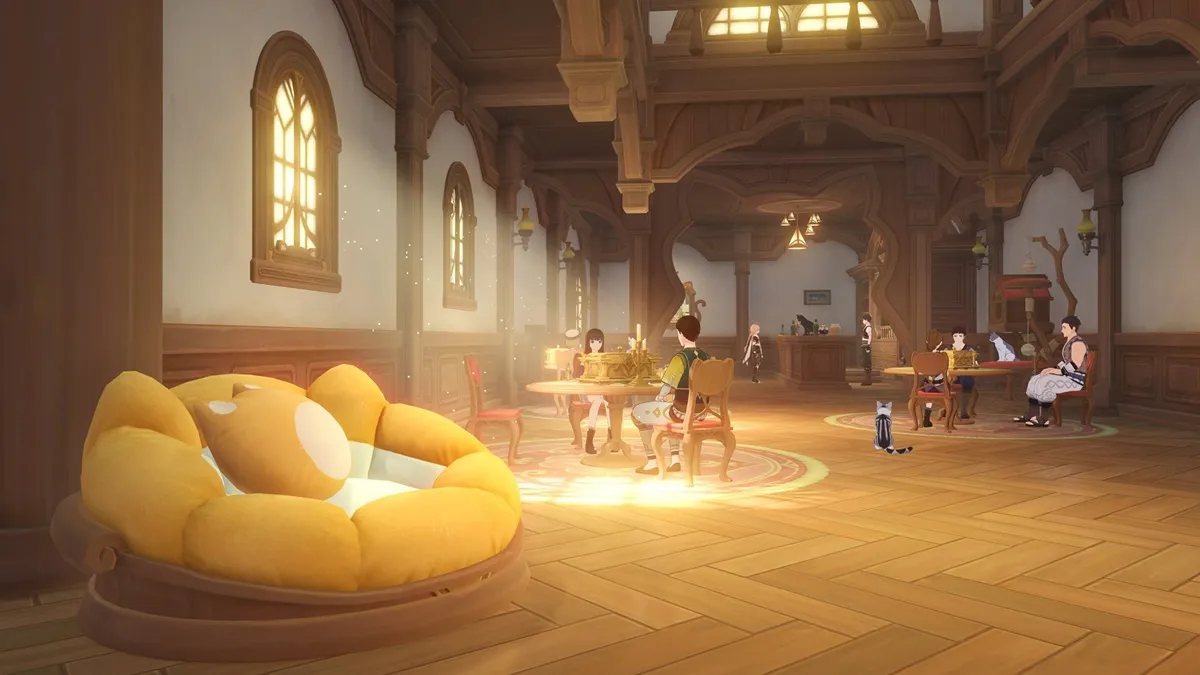
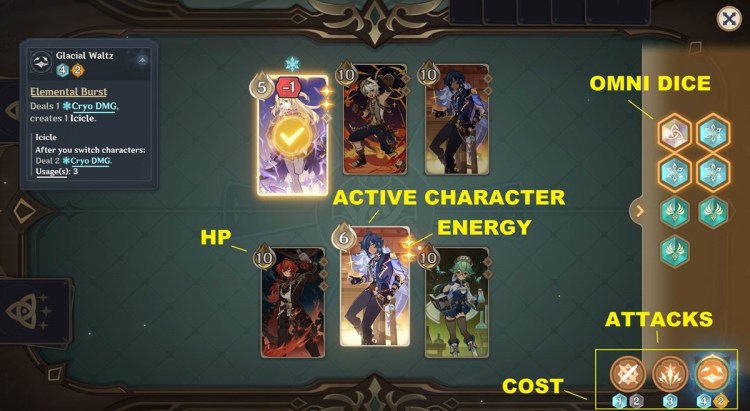
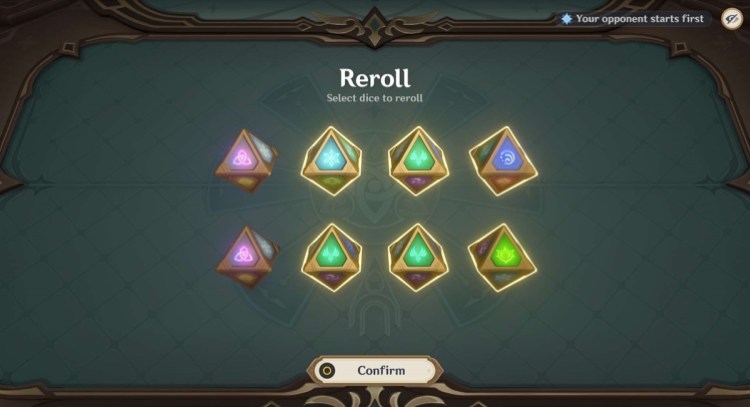
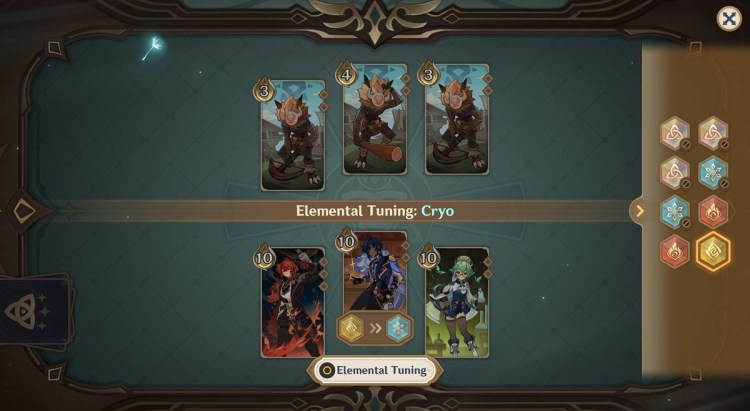
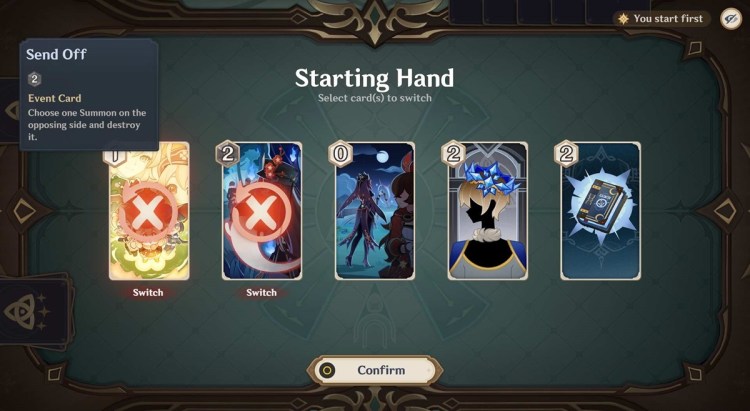
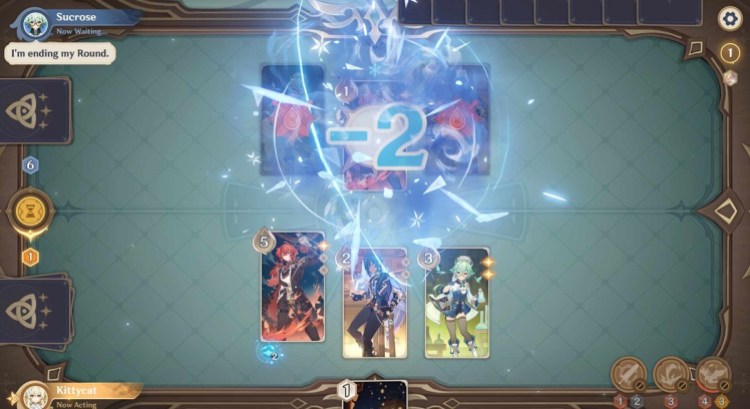
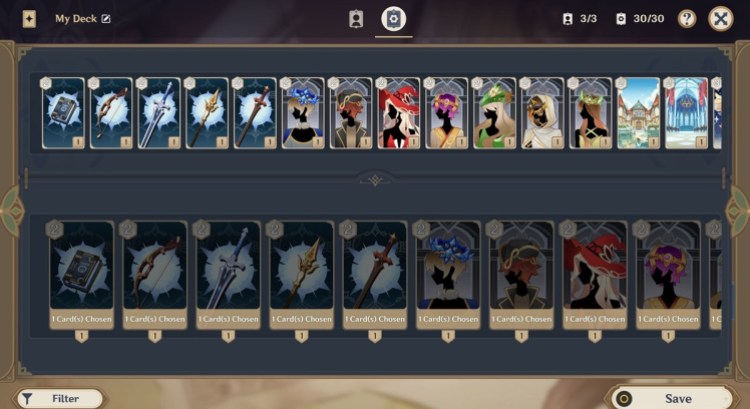
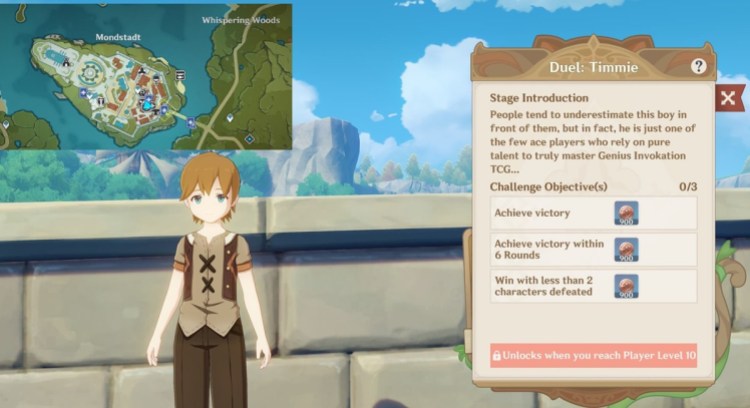
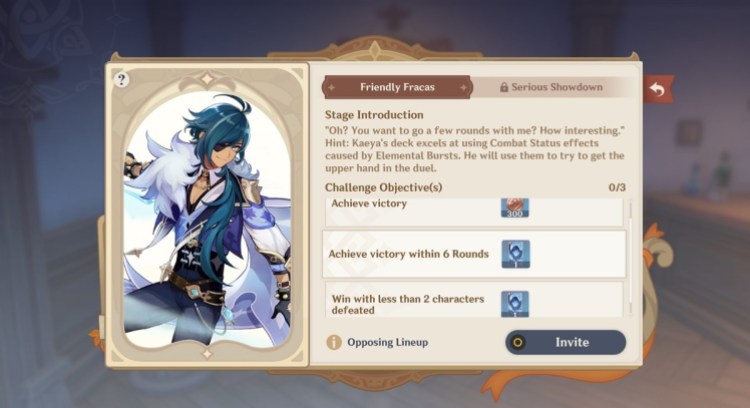




Published: Dec 7, 2022 03:35 am